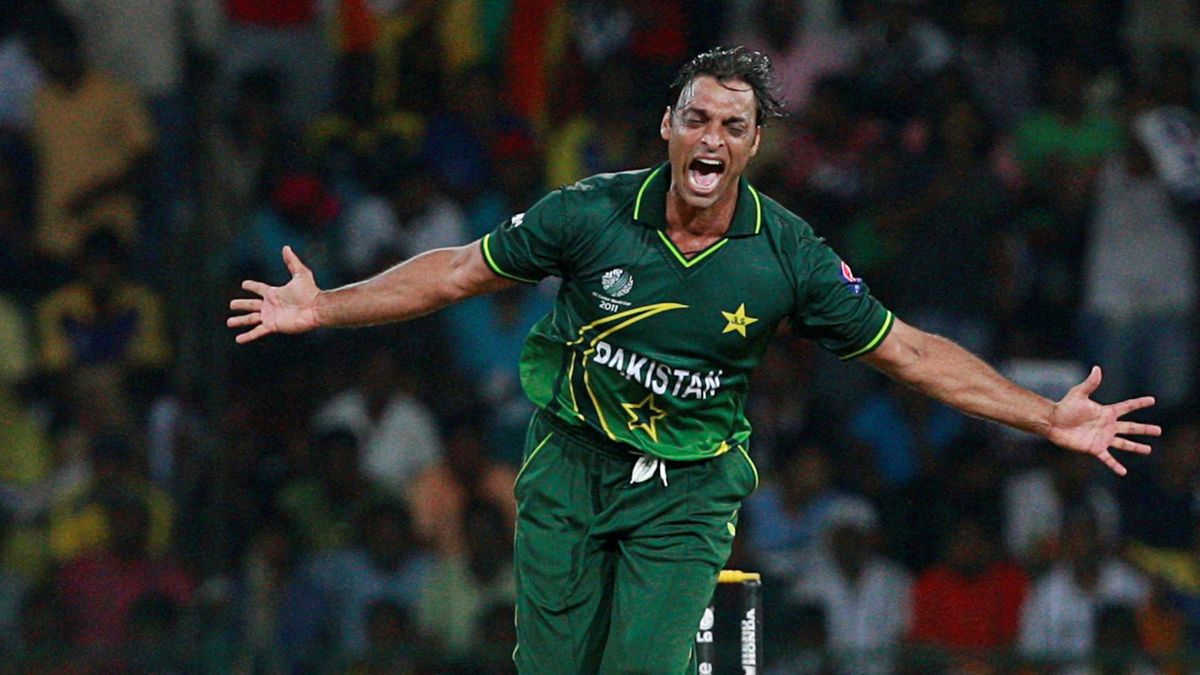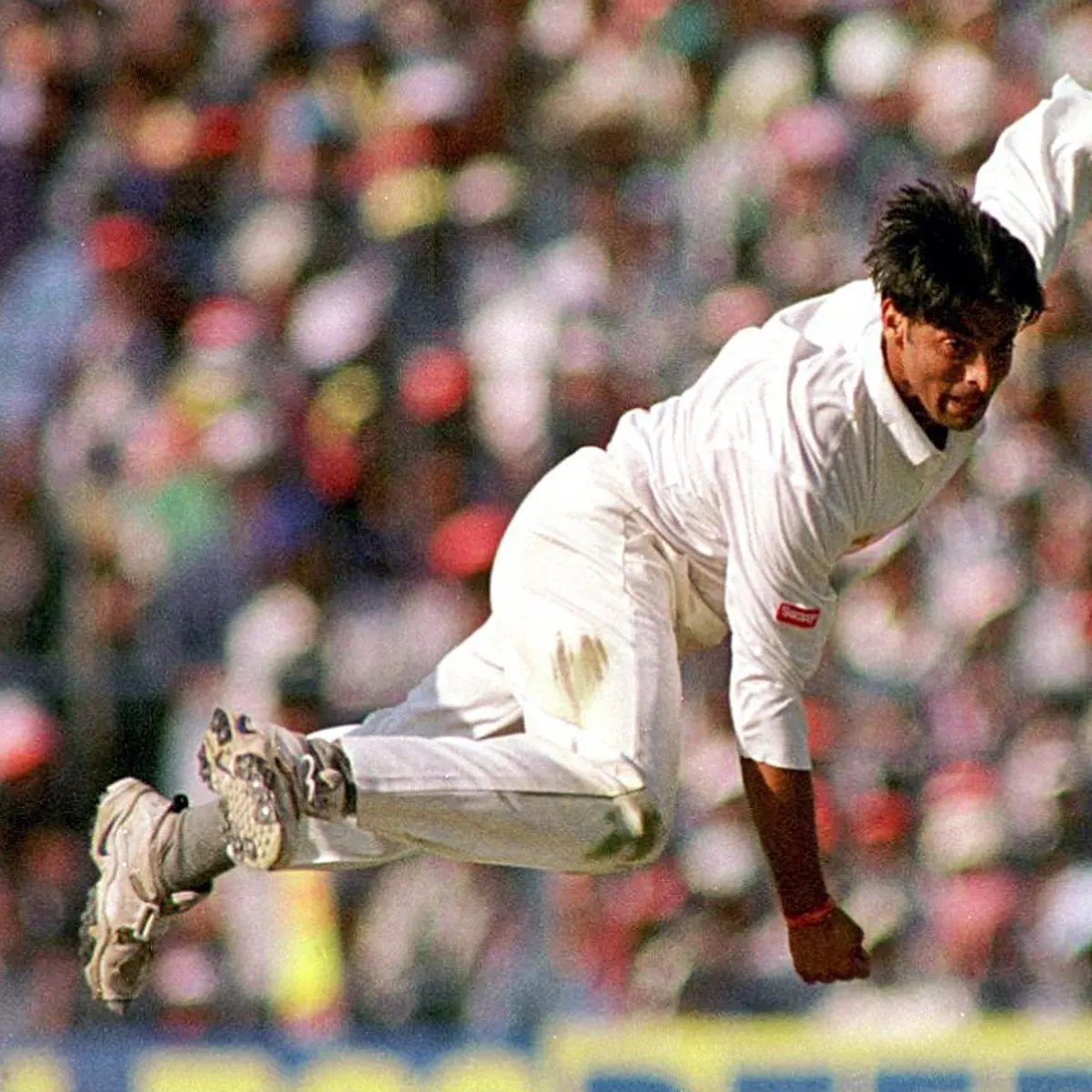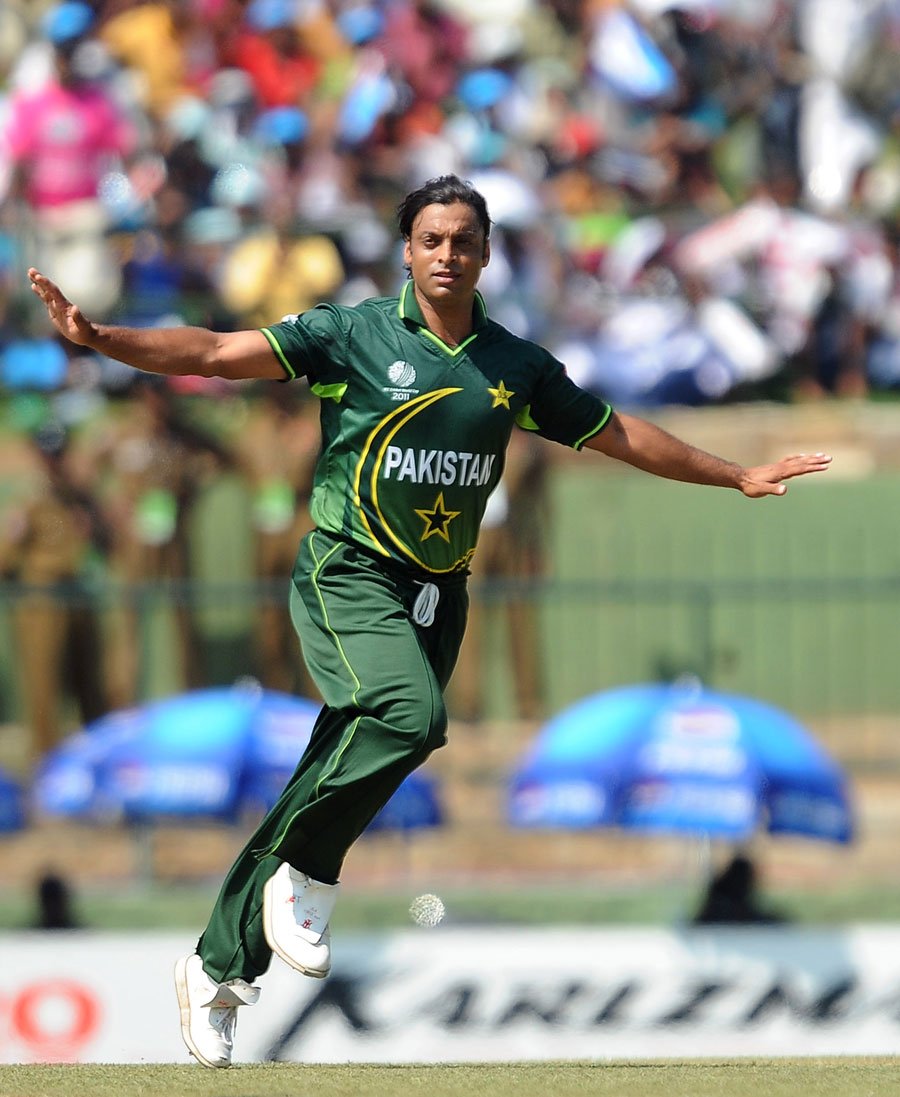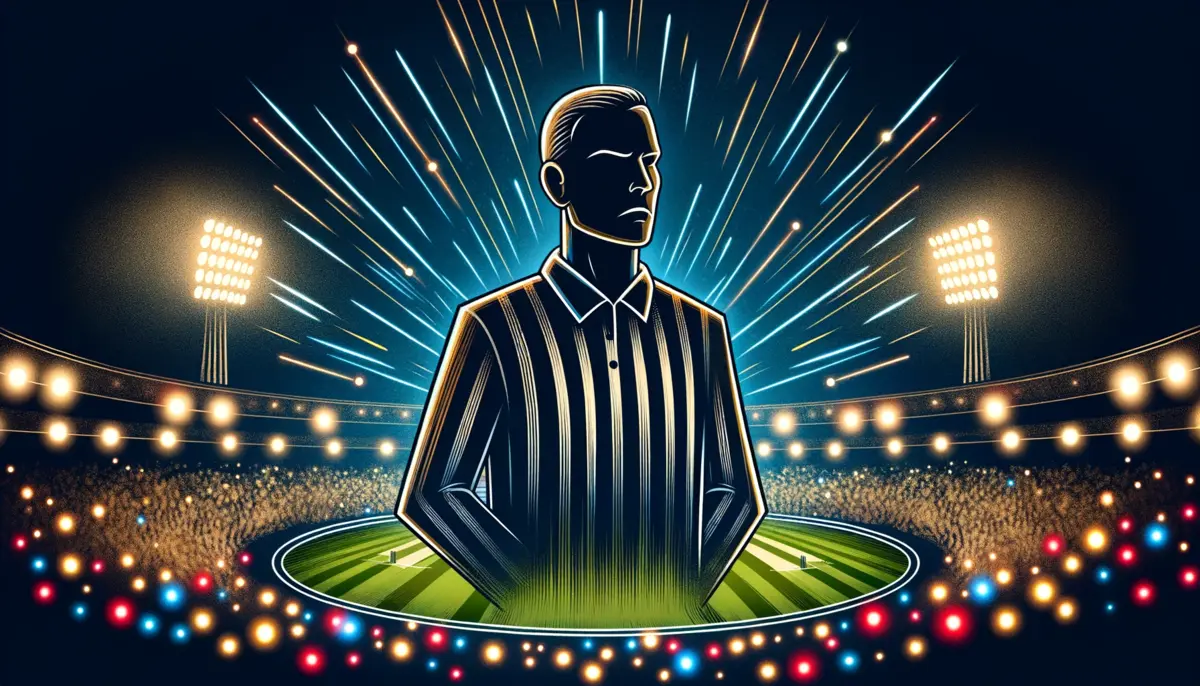A man known as the “Rawalpindi Express”—that’s Shoaib Akhtar. His record-breaking pace of 161.3 kmph propelled him to stardom in the world of cricket.
In 1997, Shoaib made his Test debut and immediately proved himself to be a formidable opening fast bowler. One Day Internationals became his domain only three months after that.
But speed wasn’t the only factor in Shoaib’s path. A cloud of controversy followed him around like a cloud of unsportsmanlike behavior. He triumphed over these obstacles, astonishingly.
For example, in 2005, he was reportedly let go from an Australian series owing to attitude problems. The next year, he was almost banned for nandrolone use, but he won his appeal.
Key Takeaways
Hide- Blazing Debut: Akhtar's entry into international cricket in 1997 was marked by remarkable speed and skill.
- Controversial Figure: His career was riddled with controversies, including ball tampering and behavioral issues.
- Injury Struggles: Frequent injuries, especially to his hamstring, wrist, and knees, significantly hampered his career.
- Doping Allegations: Faced a doping scandal in 2006 but was acquitted due to procedural flaws.
- Domestic and IPL Success: He achieved notable success in county cricket and the Indian Premier League.
- Outspoken Post-Retirement: Akhtar became a vocal critic of cricket administration and a popular YouTube commentator.
- Enduring Legacy: Despite the ups and downs, Akhtar's legacy as a fast-bowling legend endures.
After criticizing the Pakistan Cricket Board in 2008, Shoaib’s outspoken character resulted in a ban of five years. Resilience, though, was prominent.
In order to allow him to participate in the Twenty20 Quadrangular Tournament in Canada, the Lahore High Court lifted the suspension.
Following his retirement, Shoaib Akhtar made a remarkable turn. He began reviewing international and Pakistani cricket matches on YouTube and provided informative commentary.
Shoaib’s unrivaled legend as the “Rawalpindi Express”—a tale of courage, speed, and strength—lives on.
Shoaib Akhtar: A Journey from Morgah to Stardom

Born in Morgah, Rawalpindi, Shoaib Akhtar’s roots trace back to a humble Punjabi Gujjar family.
His father, Mohammad Akhtar, embodied religious dedication and hard work, serving as a night watchman at an Attock oil refinery’s petrol station.
Marrying Hameeda Awan in her teenage years, they embraced the joys and challenges of raising five children. Shoaib, the fourth son, was named by his mother, symbolizing unity and separation in Arabic.
Later, Shoaib’s personal life blossomed when he married Rubab Khan on November 11, 2014. Together, they welcomed their first son, Mohammad Mikaeel Ali, in November 2016.
Joy doubled in July 2019 with the arrival of their second son, marking another chapter in their family story.
Rising Star: Shoaib Akhtar’s Early Career
A young and diligent Akhtar enrolled at Asghar Mall College, but soon veered off. He aimed for the PIA team’s trials in Lahore.
Financially strapped, he daringly hitched a ride atop a bus. His List A debut came in the 1993/1994 season, followed by first-class cricket the next year.
Majid Khan, PCB’s chief, spotted his talent. After a stellar tour with Pakistan A in England, 1996, Akhtar’s Test debut against the West Indies in 1997 sealed his fate.
Fast Lane: Shoaib Akhtar’s International Career
Akhtar’s Test career initially blossomed in Rawalpindi, 1997, against the West Indies. Soon, he joined the tour of South Africa in 1998.
Notably, he led Pakistan’s attack in Peshawar against Australia, where he faced Mark Taylor’s legendary 334. By 1999, Akhtar’s prowess shone, especially against India.
His eight wickets at Calcutta, including Dravid and Tendulkar, marked a high point. Controversy and commitment issues marred some matches, but his 2005 resurgence against England showcased his skill with 17 wickets.
Club and Country: Shoaib Akhtar’s Domestic Journey
Akhtar’s county cricket stints in England saw mixed success. He played for Somerset (2001), Durham (2003, 2004), and Worcestershire (2005).
Despite fitness challenges and mixed perceptions, he delivered standout performances, like 5 for 35 against Somerset and 6 for 16 against Gloucestershire.
In the IPL, Akhtar shone for Kolkata Knight Riders against Delhi Daredevils. His 4 for 11 in 3 overs was a testament to his enduring talent and character.
Shoaib Akhtar: A Career Shrouded in Controversy

Shoaib Akhtar’s journey in cricket has been nothing short of a rollercoaster. His career, marked by frequent injuries and controversies, often overshadowed his on-field prowess.
Post the disappointing 2003 Cricket World Cup, Akhtar found himself embroiled in a verbal spat with Waqar Younis, another Pakistani cricket legend. This altercation cost him his place in the team, alongside other players.
Ball Tampering and Bans
Akhtar’s troubles escalated in 2003 during a series in Sri Lanka, where he was caught tampering with the ball. This incident led to his ban, making him the second cricketer to face such a punishment.
The same year, he faced a ban for abusing South African bowler Paul Adams. Persistent wrist and back injuries in 2004 raised questions about his dedication to the team.
Injury and Indiscipline Woes
2005 presented further challenges. Sent back from an Australian tour due to a hamstring injury, rumors of his indiscipline and lack of commitment spread. The Pakistan Cricket Board fined him for breaking curfew rules.
Ankle and knee injuries plagued him, leading to surgery in 2006. His career took a significant hit when he faced a two-year ban for alleged performance-enhancing drug use.
The Drug Scandal that Rocked Cricket

Caught in a Doping Storm
October 2006 saw Shoaib Akhtar and Mohammed Asif suspended by the Pakistan Cricket Board for testing positive for nandrolone. They were immediately withdrawn from the 2006 ICC Champions Trophy.
Akhtar maintained his innocence, claiming he never knowingly took performance-enhancing drugs. Despite his defense, the Anti-Doping Committee recommended a two-year ban.
Acquittal and Aftermath
In a dramatic turn, both Akhtar and Asif were acquitted by a tribunal in December 2006. The decision cited technical flaws in the drug testing process and a lack of awareness about the banned substance in supplements.
However, the duo missed the West Indies Test series, as the PCB advised them to regain form through domestic games. They also sat out the 2007 Cricket World Cup due to injuries.
Discipline and Disputes
August 2007 saw Akhtar in a dispute with the PCB over a hefty fine for indiscipline. He made headlines again for allegedly hitting teammate Mohammad Asif with a bat, leading to his recall from the Twenty20 World Cup squad and a subsequent five-match ban.
A Ban and Legal Battles
April 2008 marked a low point in Akhtar’s career as he faced a five-year ban for violating the players’ code of conduct.
Despite this, he fought against the ban, leading to a temporary suspension and allowing him to participate in the Indian Premier League.
He also faced a defamation suit from the PCB chairman but later retracted his statements, leading to a reconciliation.
Visa Issues and Health Concerns
In September 2008, visa issues saw him sent back from Heathrow Airport, but he soon returned to play for Surrey. Health problems continued to haunt him, leading to his exclusion from the 2009 ICC World Twenty20 squad.
Speaking Out
In his later years, Akhtar often voiced his opinions on the PCB’s politics, criticizing their approach and player management.
His outspoken nature continued to make headlines, keeping him in the cricketing spotlight long after his playing days were over.
Frequently Asked Questions (FAQs)
When did Shoaib Akhtar make his Test debut, and what was his impact?
Shoaib Akhtar debuted in Test cricket in 1997, instantly establishing himself as a formidable fast bowler known for his record-breaking speed.
What controversies did Shoaib Akhtar face during his career?
Akhtar’s career was marred by several controversies, including ball tampering in 2003, a ban for abusive behavior, and allegations of performance-enhancing drug use in 2006, although he was later acquitted.
How did injuries affect Shoaib Akhtar's cricketing career?
Injuries, particularly hamstring, wrist, ankle, and knee issues, significantly affected Akhtar’s career, leading to surgeries and impacting his performance.









